Sasaki Wins Chengdu Tianfu Olympic Sports City
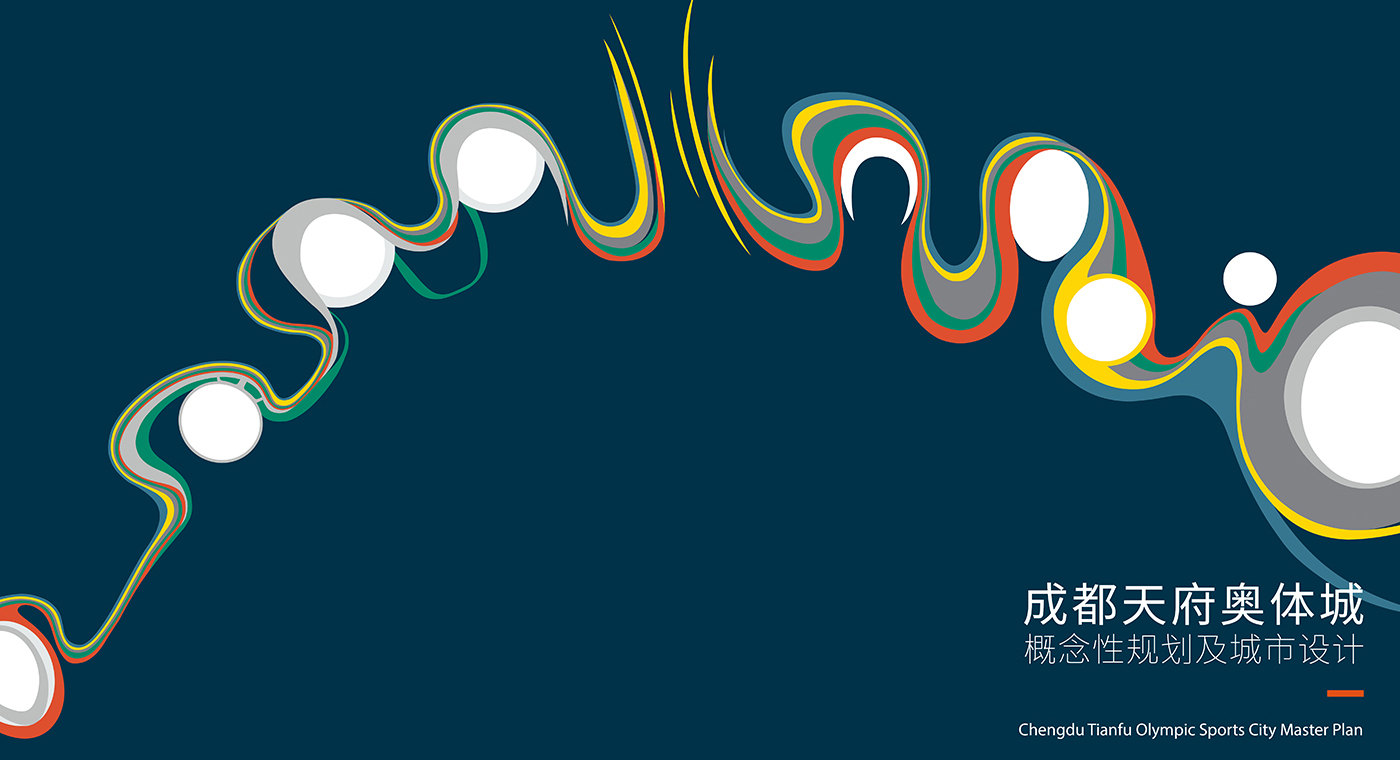
 Sasaki
Sasaki

Chengdu, known for pandas and spicy cuisine, is taking a bold step towards becoming a world-class sports city. With the aim of building a “World City of Sporting Events,” Chengdu is embarking on the development of an Olympic-scale sports district that will drive year-round tourism, increase community recreation opportunities, and create new opportunities for both public and private development in the capital city of Sichuan Province. In June, the city launched an international design competition for the urban design of Tianfu Olympic Sports City which drew responses from over a hundred international design firms. Sasaki is honored to announce that our design scheme for the site was selected as the winning proposal.
Paired with China’s “One Belt, One Road” initiative, Chengdu is strengthening its position as the economic driver of Western China, bolstered by new connections for air and high-speed rail at the Tianfu Aerotropolis. Tianfu Olympic Sports City will become the core of a robust sports-related economy driven by tourism, conventions and exhibitions, and other complementary industries including media and sports medicine. Increased tourism to the region will also enable the city to celebrate its history as the heart of Sichuan culture.
Chengdu Tianfu Olympic Sports City is situated northwest of the new Aerotropolis, which is currently under construction and will become one of the largest airports in the world. The 86 km2 Olympic City site enjoys a scenic landscape and rich ecological setting, and is also very accessible through the multiple expressways and public transit lines that connect the site to both downtown Chengdu and the new airport.
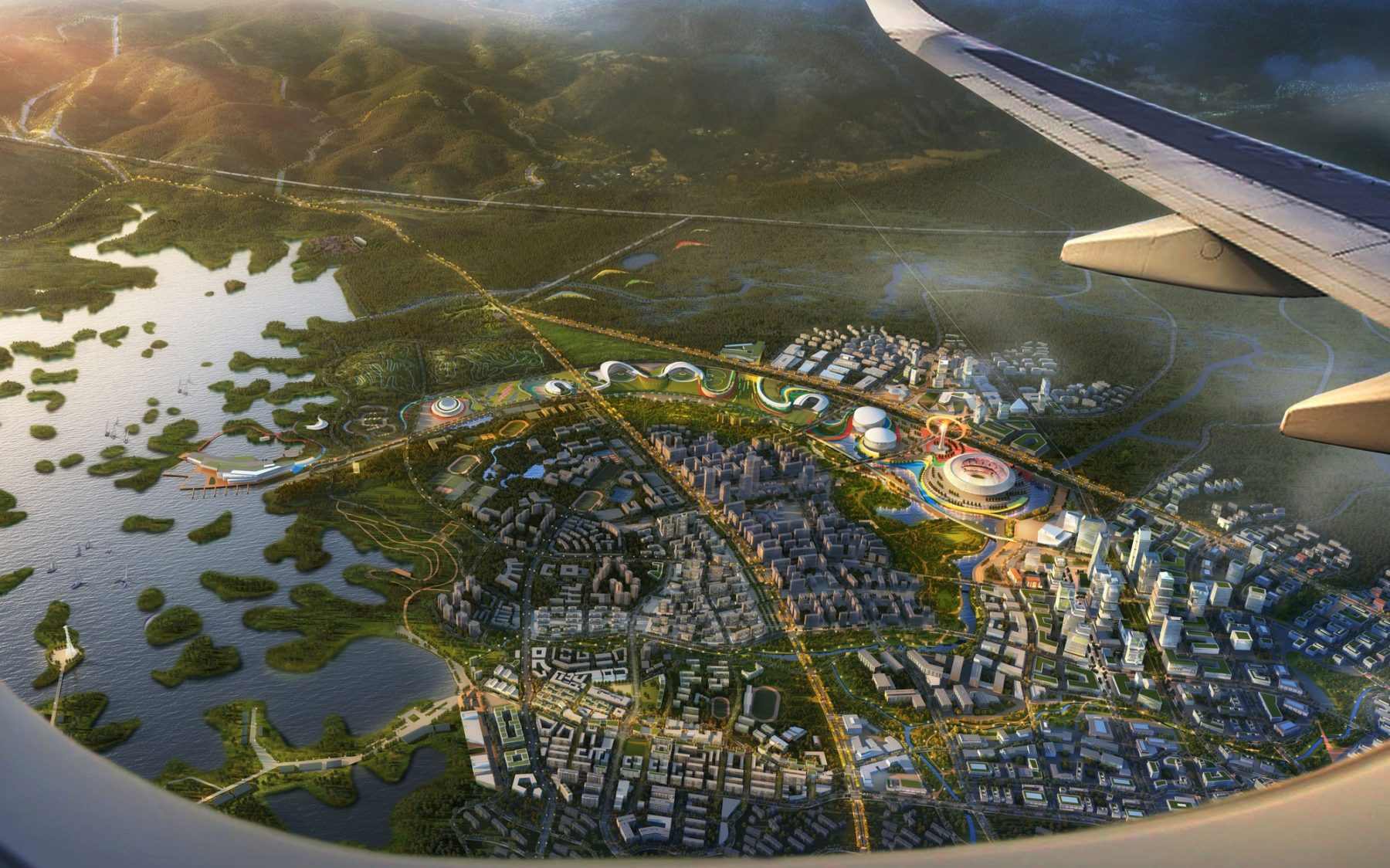
A unique perspective from the sky
To ensure the site is activated even when there are no ongoing sporting events, Tianfu Olympic City emphasizes the integration of these events alongside public recreation and research. The diverse urban fabric is comprised of a full spectrum of block sizes, ranging from monumental large event spaces to an intimate pedestrian-oriented arts village at the lakefront. The design utilizes existing terrain and stream corridors to create public spaces and urban parks, and the grid is oriented to the northeast to capitalize on prevailing summer winds for passive cooling.
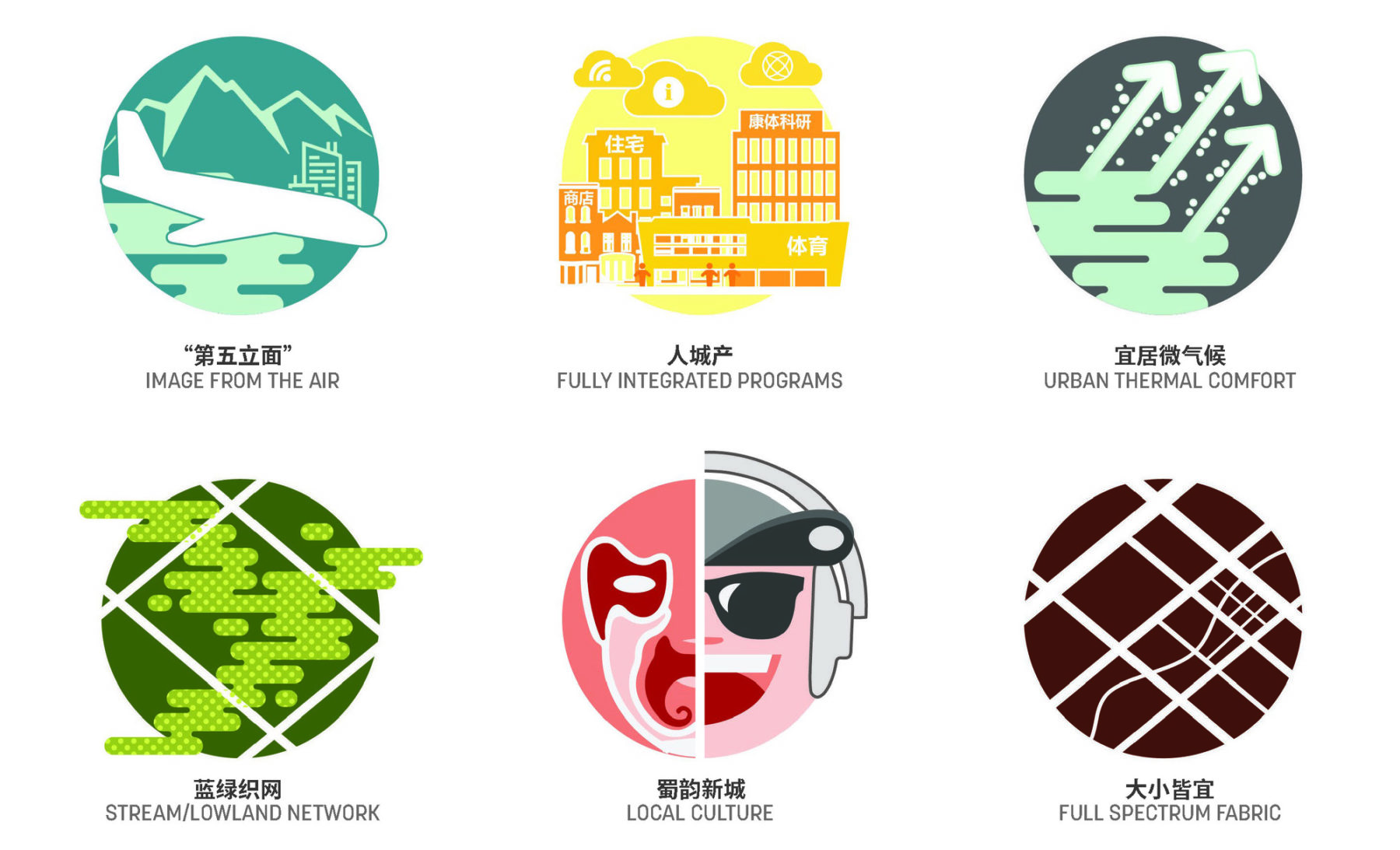
Six Core Planning Principles
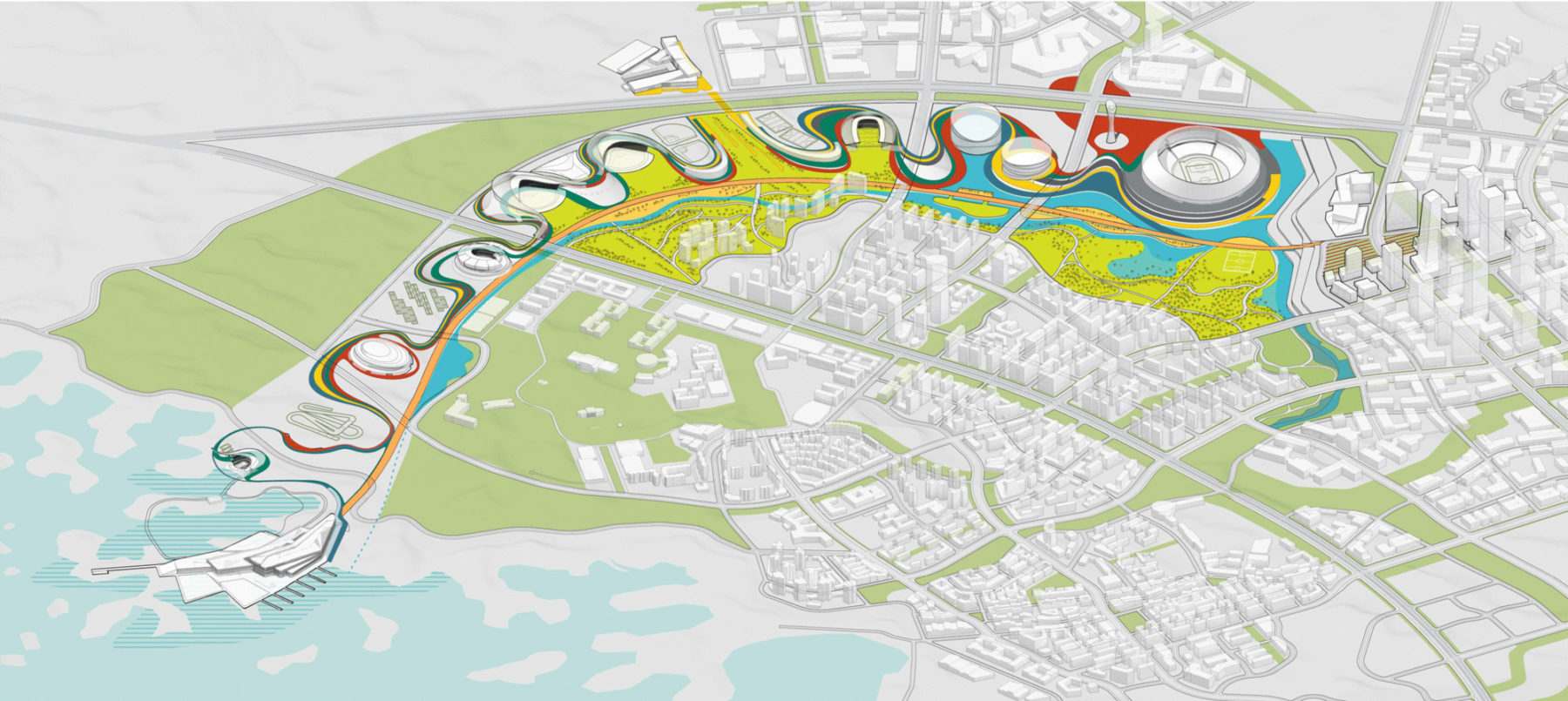
Design Concept of the Sports Axis
Tianfu Olympic City is organized into three primary districts: the 34 km2 Danjing Mountain Sports Park, the 12 km2 Central Urban District, and the 40 km2 Sancha Lake Water Sports Park. The plan integrates a variety of urban functions and activities, all served by a robust, multi-modal transportation system. The lake loop road is also ideal for events such as marathons and bicycle circuits.
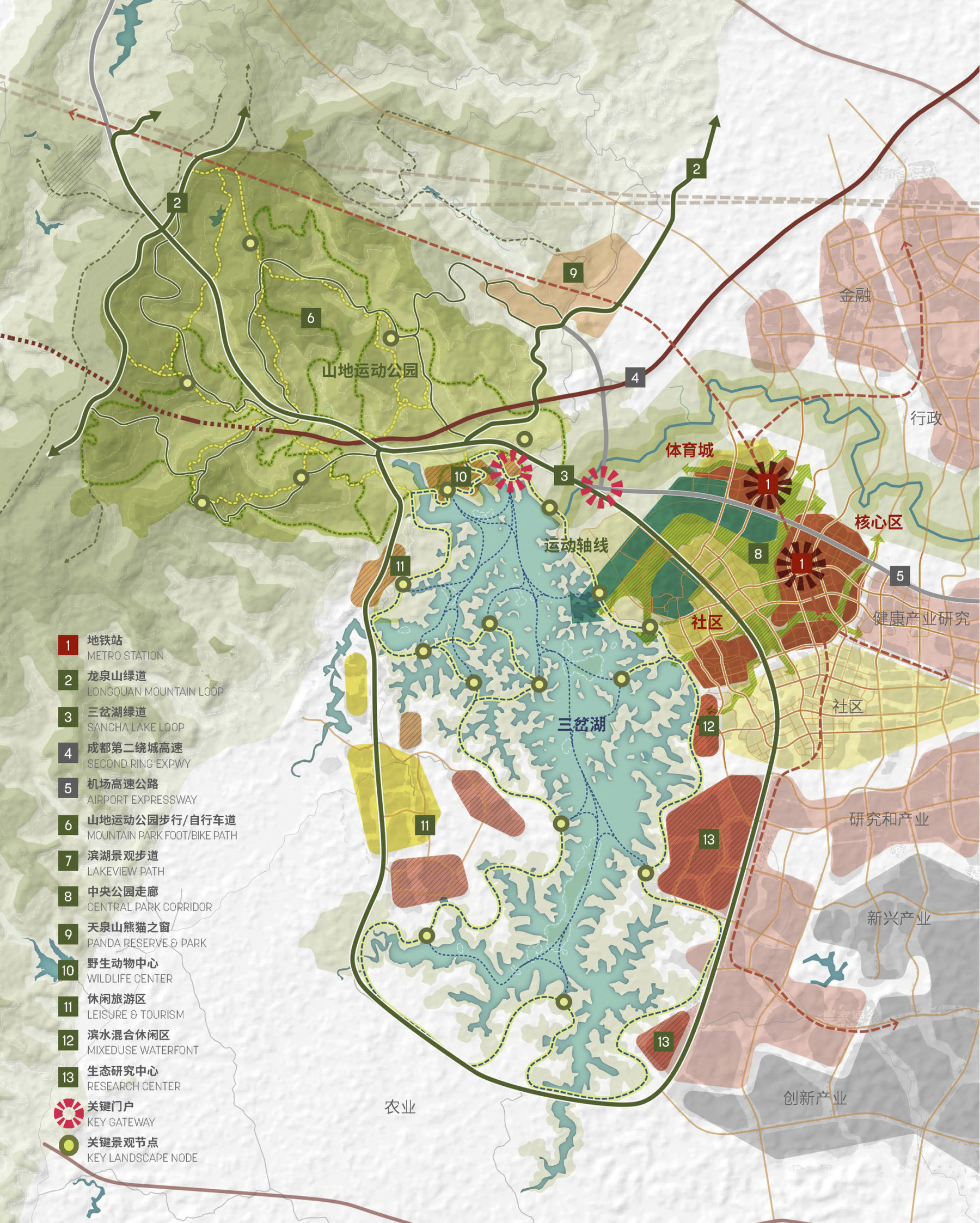
Overall Framework
The design for the Mountain Sports Park takes advantage of its intricate topography and vistas to the lake, with program and trails carefully sited using GIS analysis. A diverse variety of mountain sports and other activities are linked by a hierarchy of trails, including the Ravine Scenic Trail, the Lakefront Leisure Trail, the Cultural Destinations Trail, and the Adventure Trail.
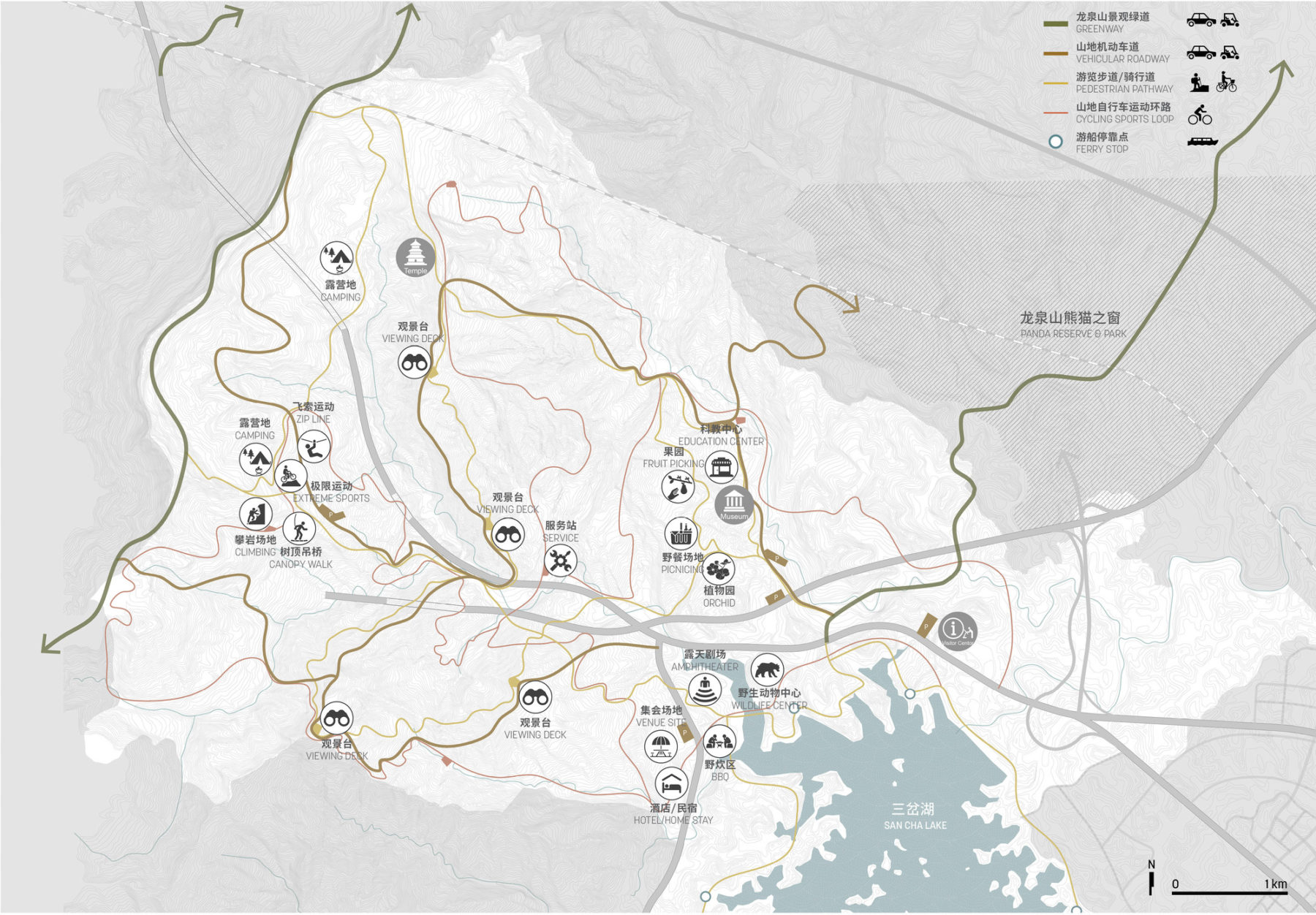
Mountain Sports Park
The Sancha Lake Water Sports Park celebrates the site’s sinuous lakeshore to create nodes for watersports linked by a hierarchy of waterfront trails.
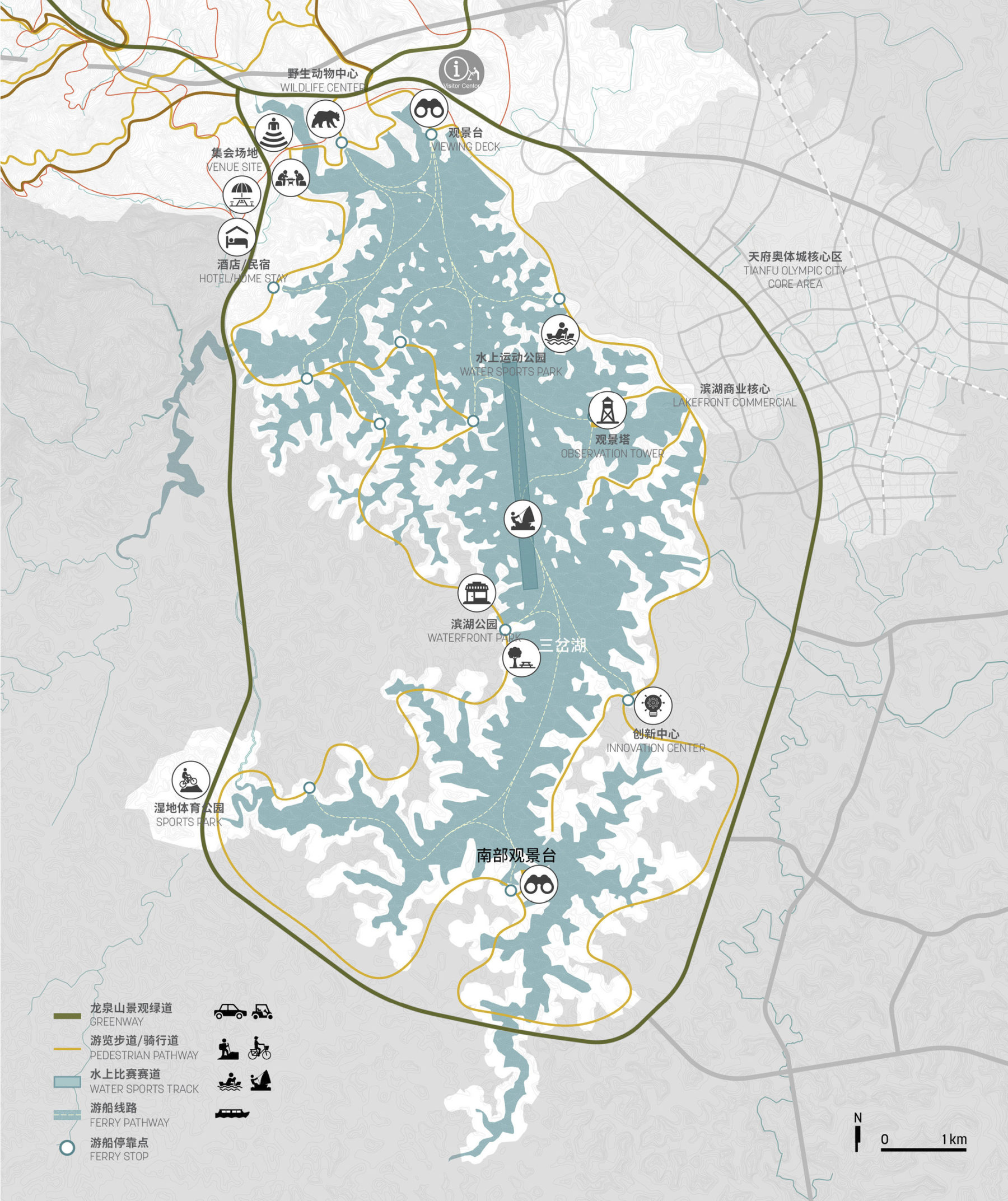
Sancha Lake Water Sports Park
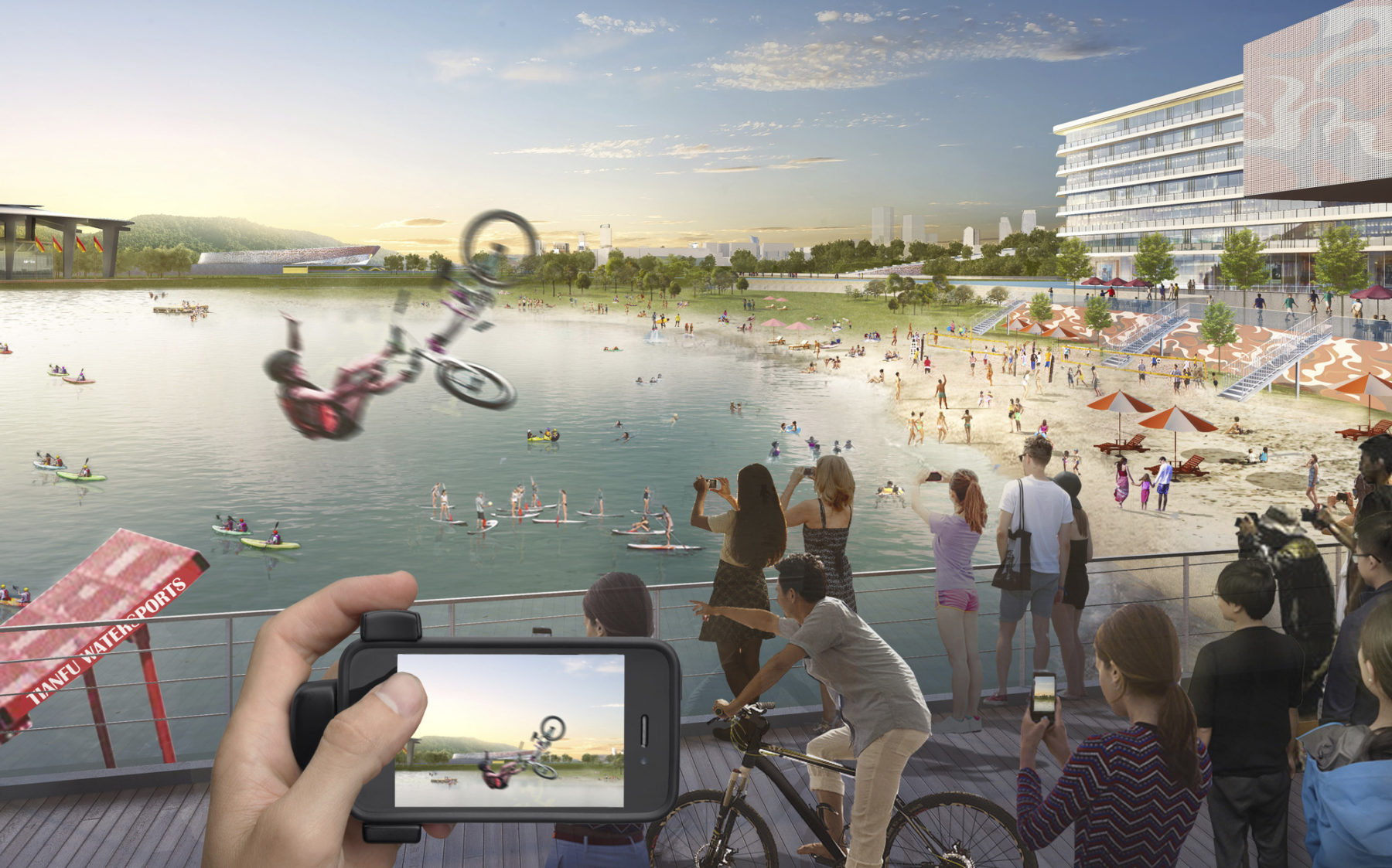
The Lakeside End of the Sports Axis
The Central District is anchored by two axes: The Sports Axis and the Urban Cultural Axis. Both are aligned to capitalize on prevailing winds from the northeast which provide cooling summer breezes, connect Sancha Lake to the Central Business District, and integrate a series of public open spaces.
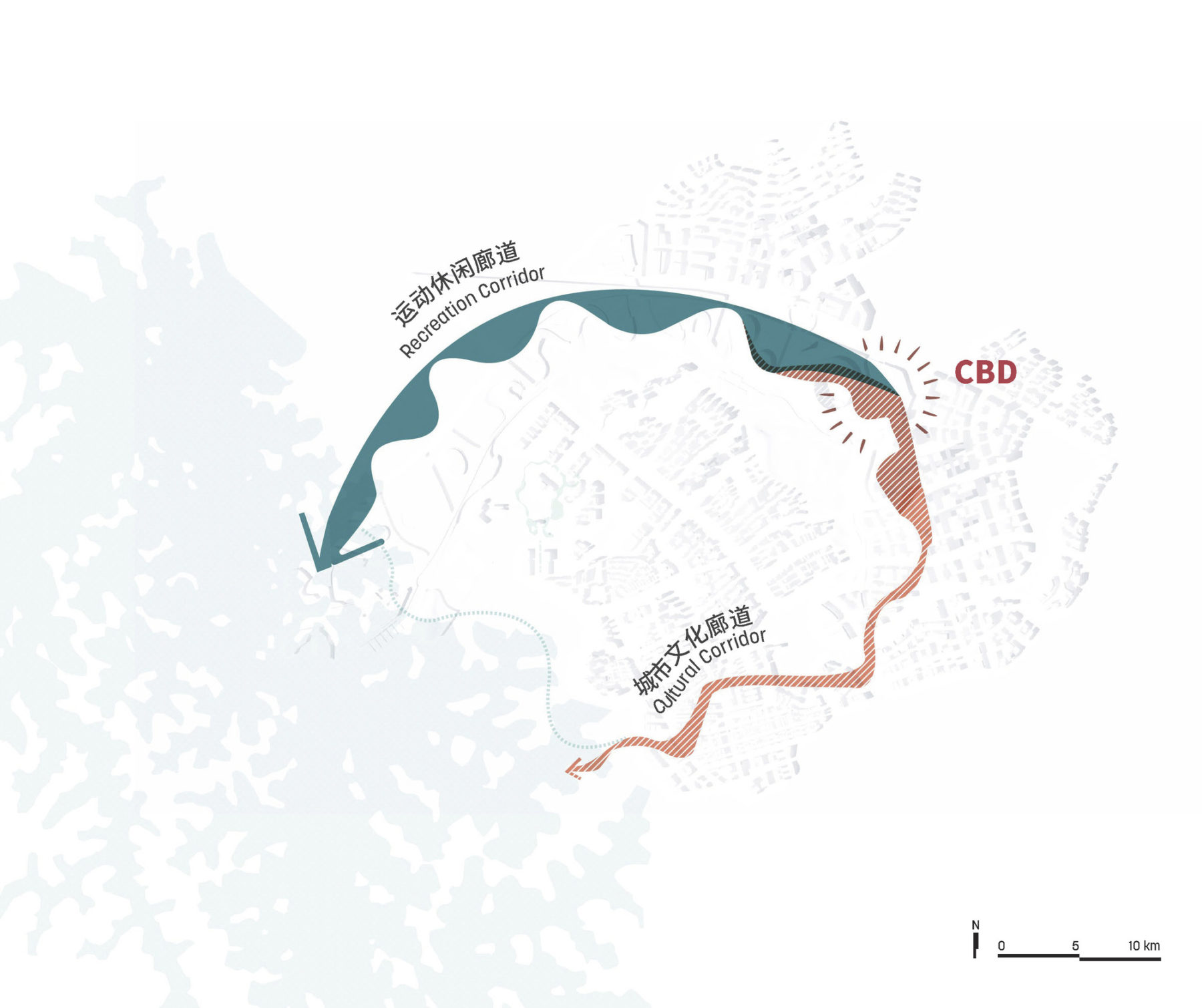
Core Area Planning Concept
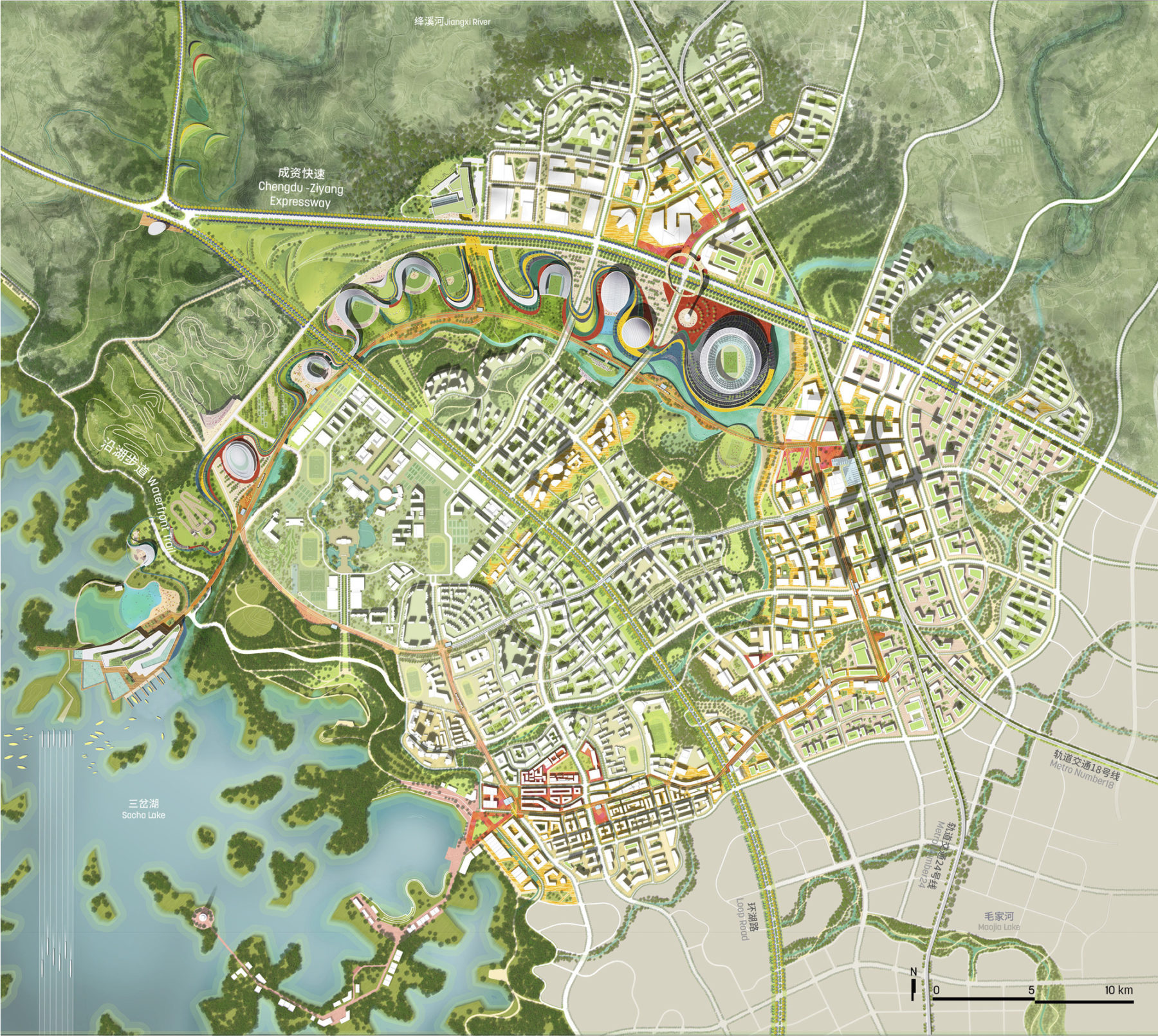
Core Area Illustrative Plan
An autonomous tram loop connects all neighborhoods, the university campus, and the lakefront arts village.
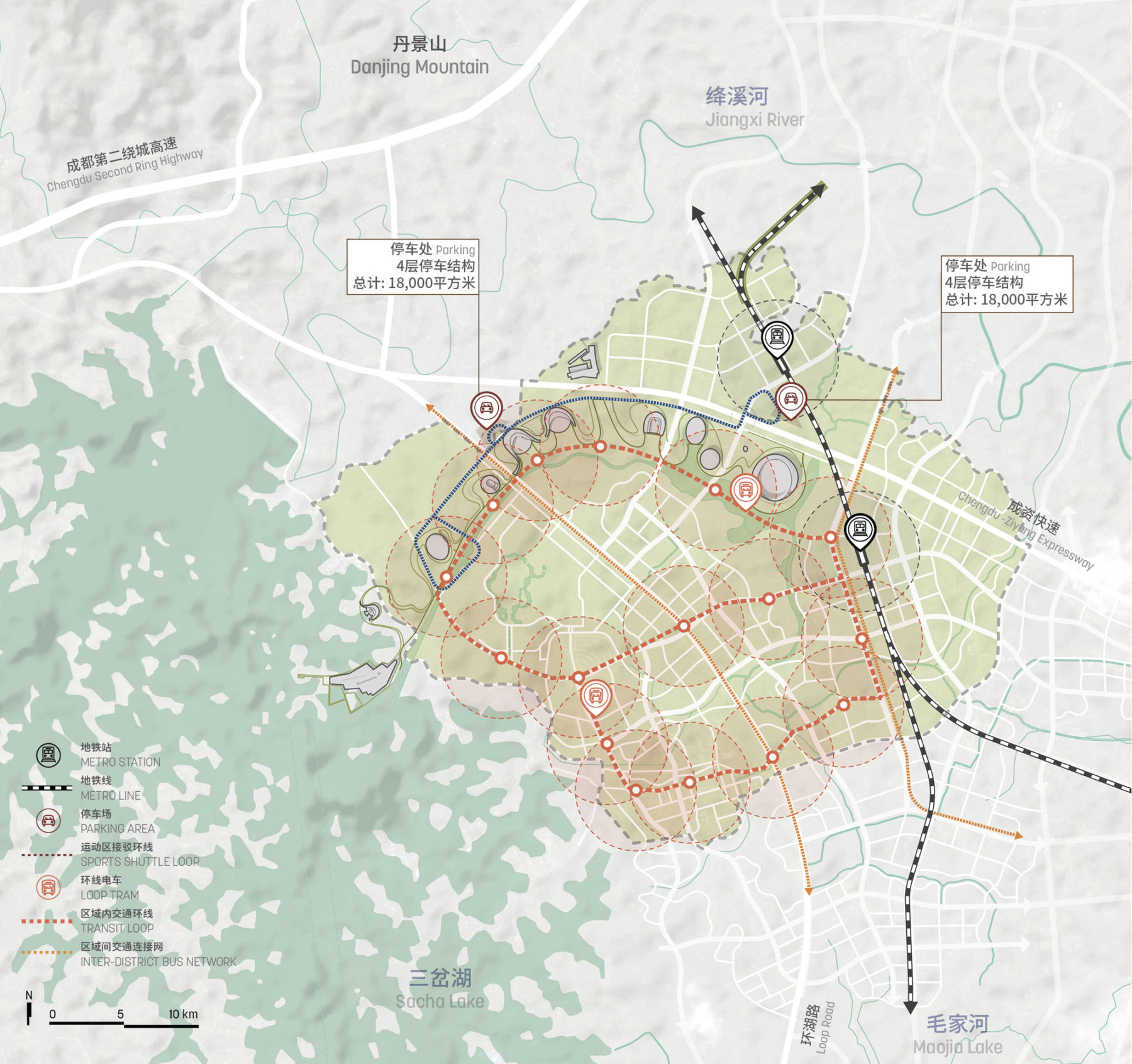
Map of the Autonomous Tram Loop
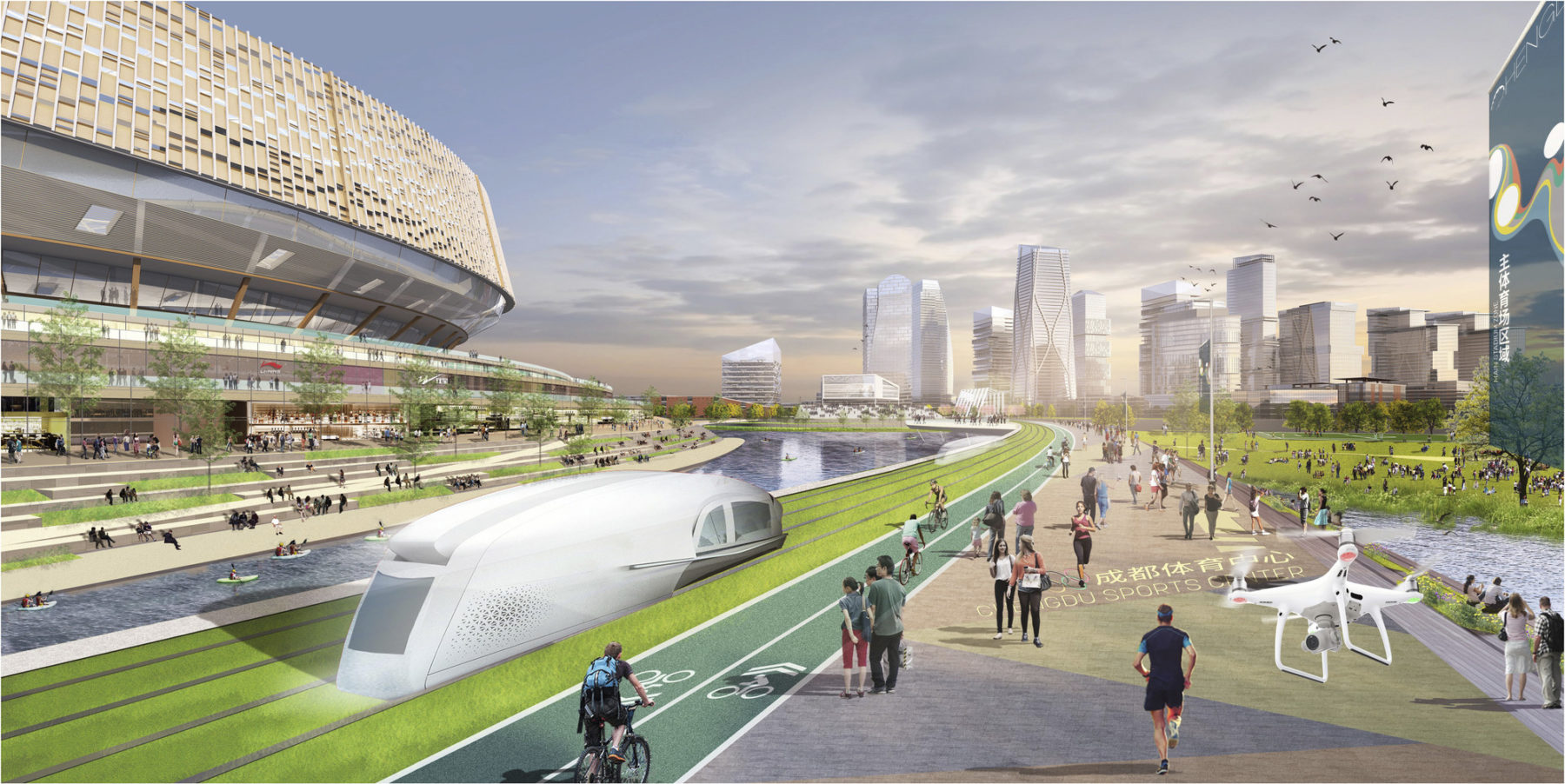
The Autonomous Tram Loop
The Sports Axis is inspired by the vernacular terrain and landscape of Sichuan, combined with the sinuous form of Sancha Lake. With minimal disturbance to the existing terrain, the design creates an iconic terraced landscape that organically cradles multiple stadiums and arenas. An Olympics-inspired five-color ribbon walk accentuates the landscape and connects all of the sporting venues. The tram loop and a dedicated transit road provide efficient public transportation connections during major events and link the Water Sports Hub to the Central Business District. The meandering stream along the sports axis compliments the Olympic ribbon walk, and the rolling landscape is reflected across the stream.
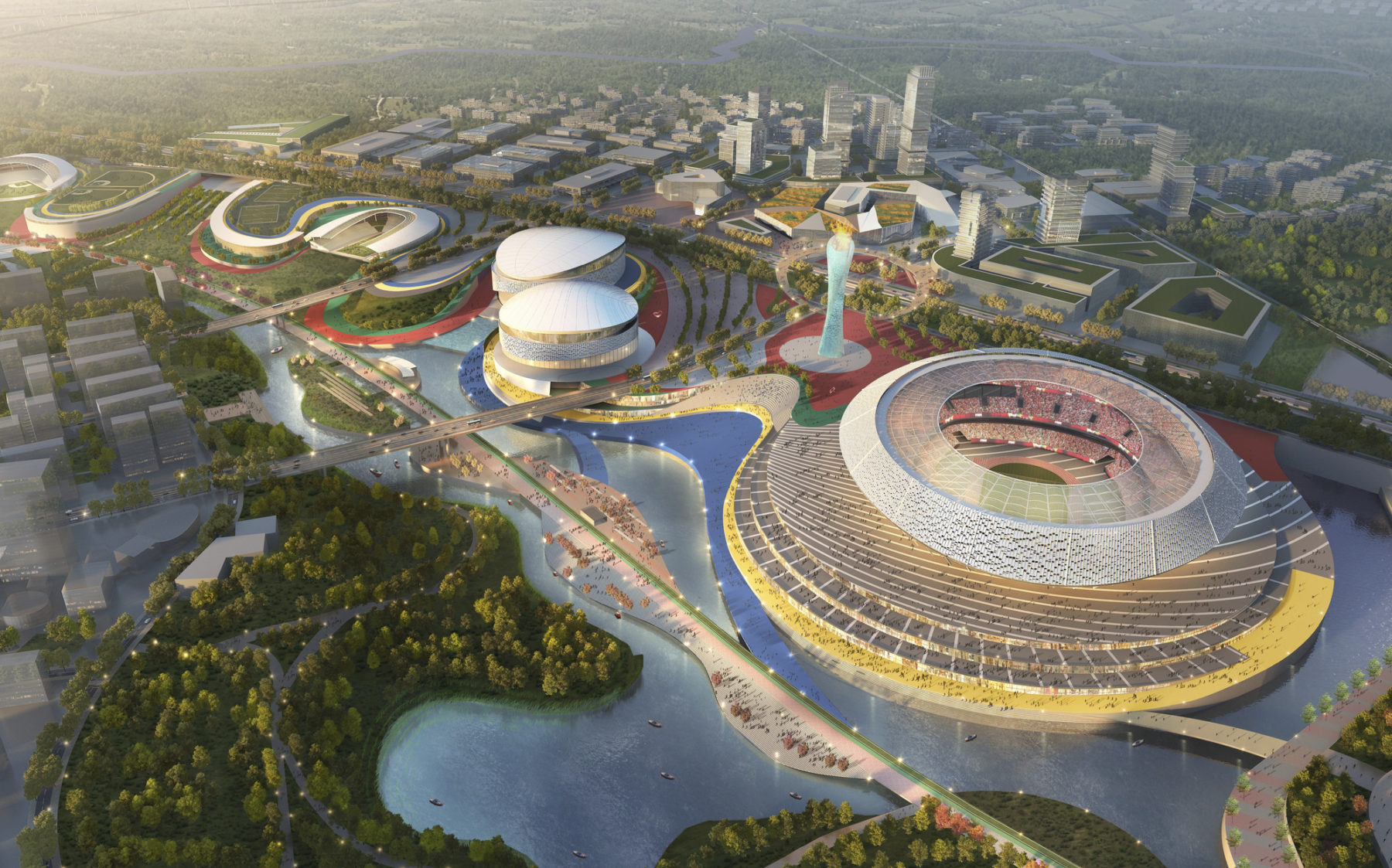
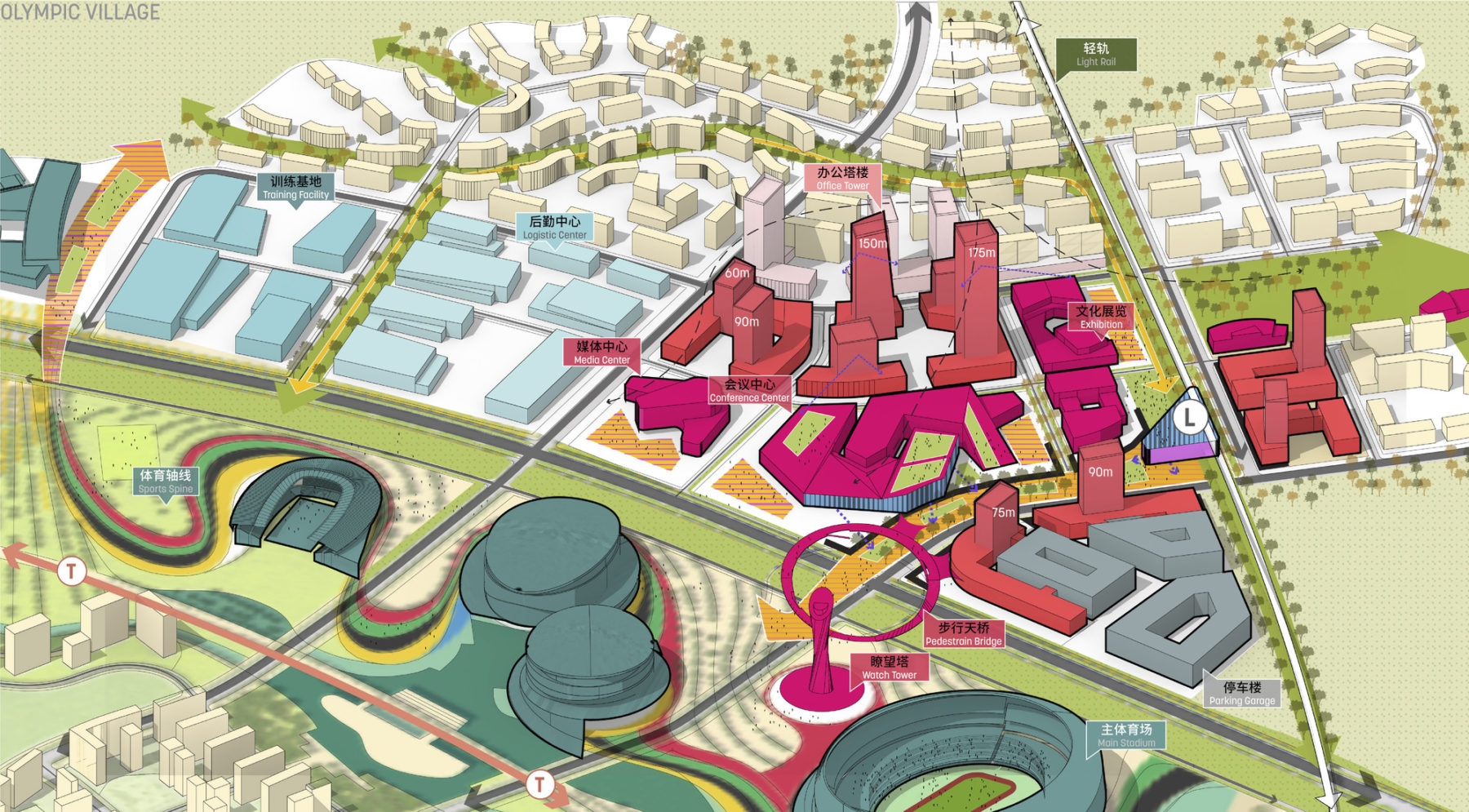
The Sports Axis and the Olympic Village
The stadiums themselves are carefully integrate into the landscape. The terraced landscape and the stadiums strategically reconcile elevation changes with a variety of civic and commercial program, all facing the stream corridor and the park.
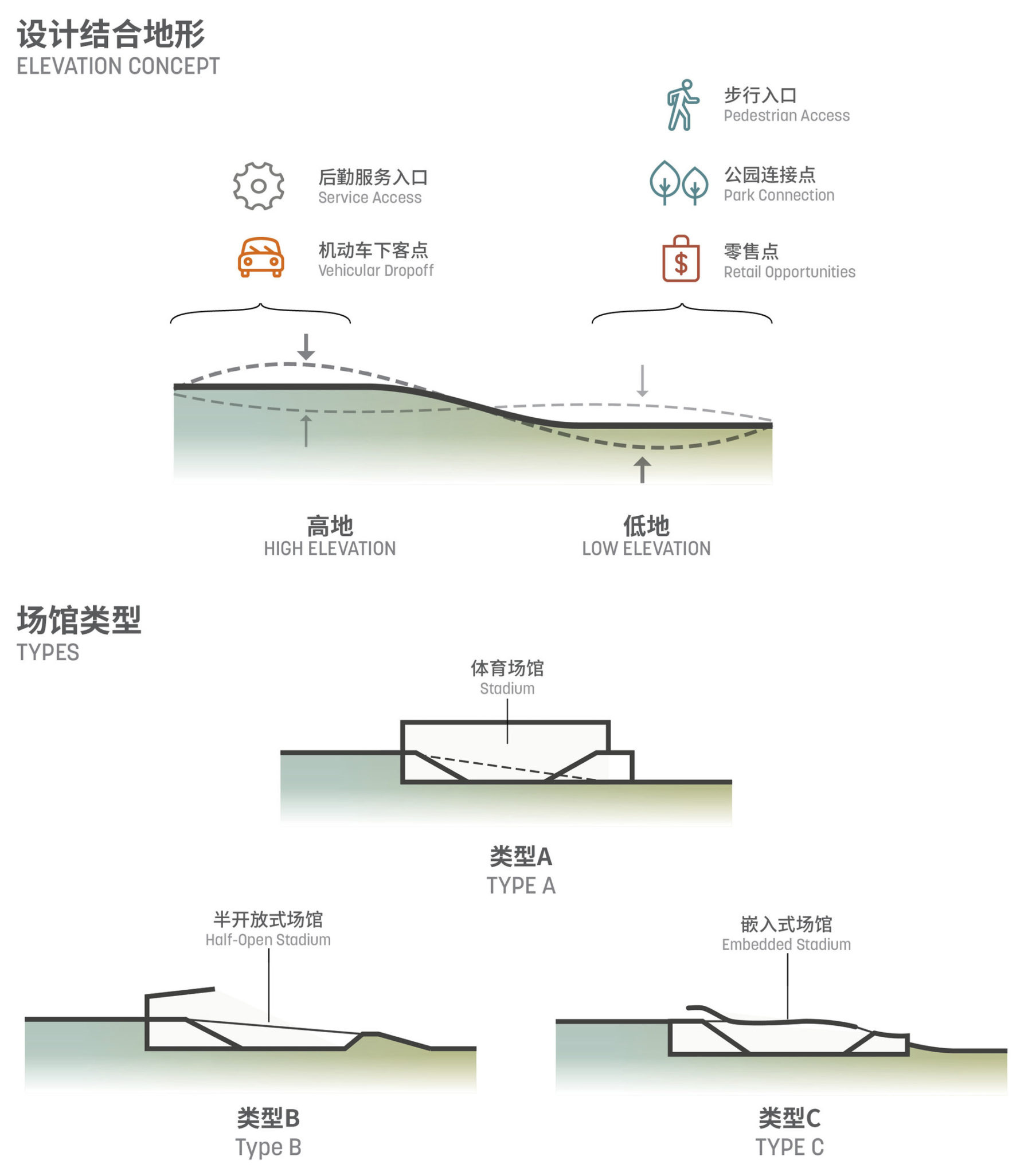
Well-Integrated Sports Venues
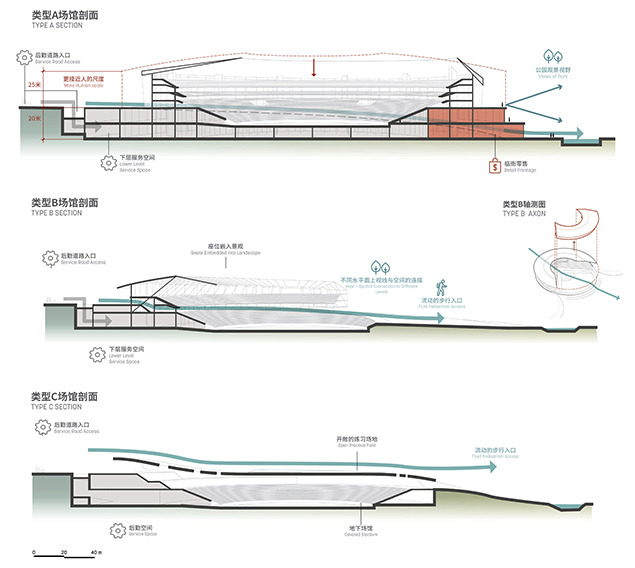
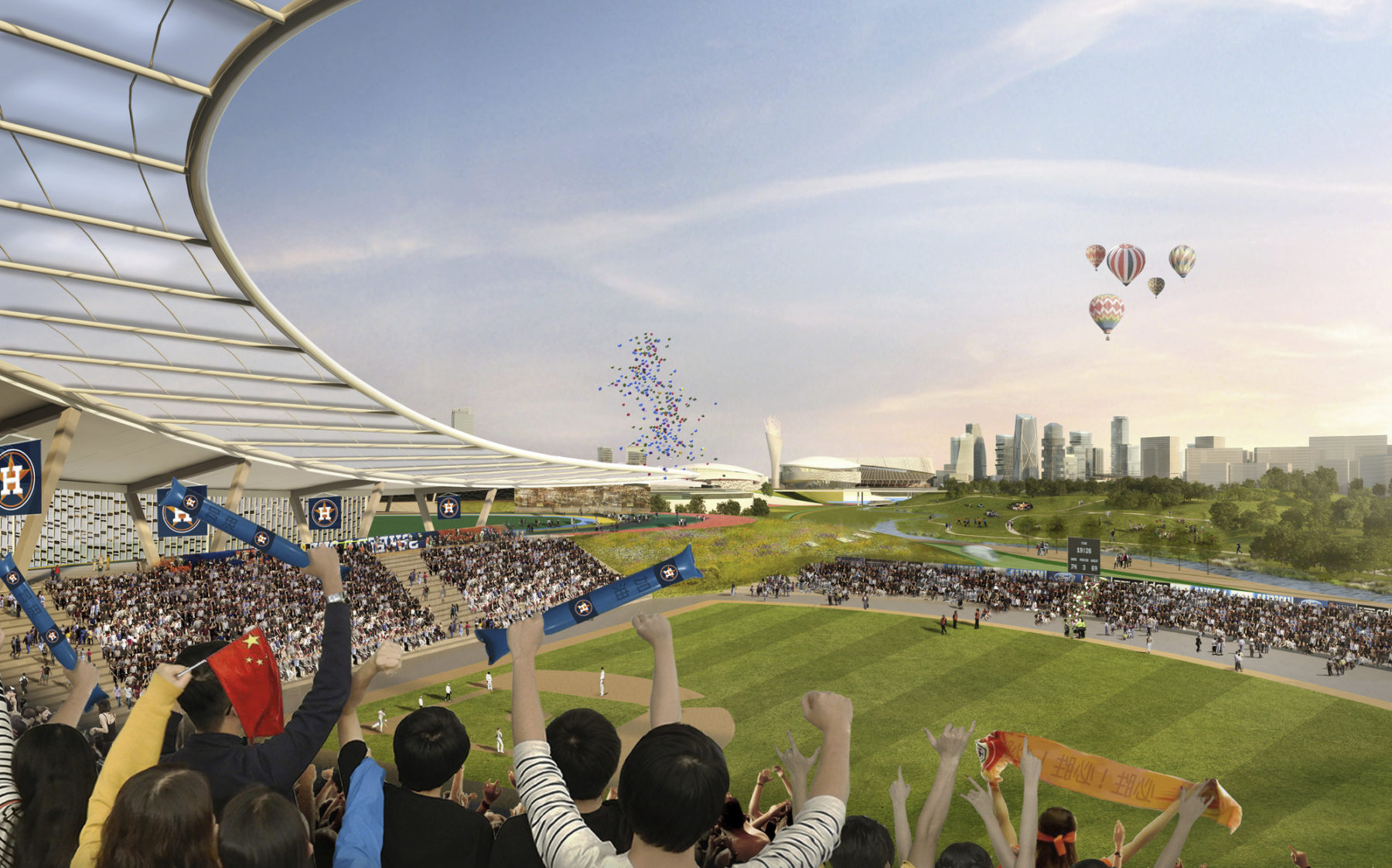
Sports Venues Connect with the Rolling Park Land
Inspired by the bamboo forests for which Chengdu is famous, the façades of the stadiums create a dynamic visual effect with a diverse treatment of horizontal joints with varied depth, height, and gaps. The lower podium reveals bamboo-like layers which appear to be sprouting from the ground.
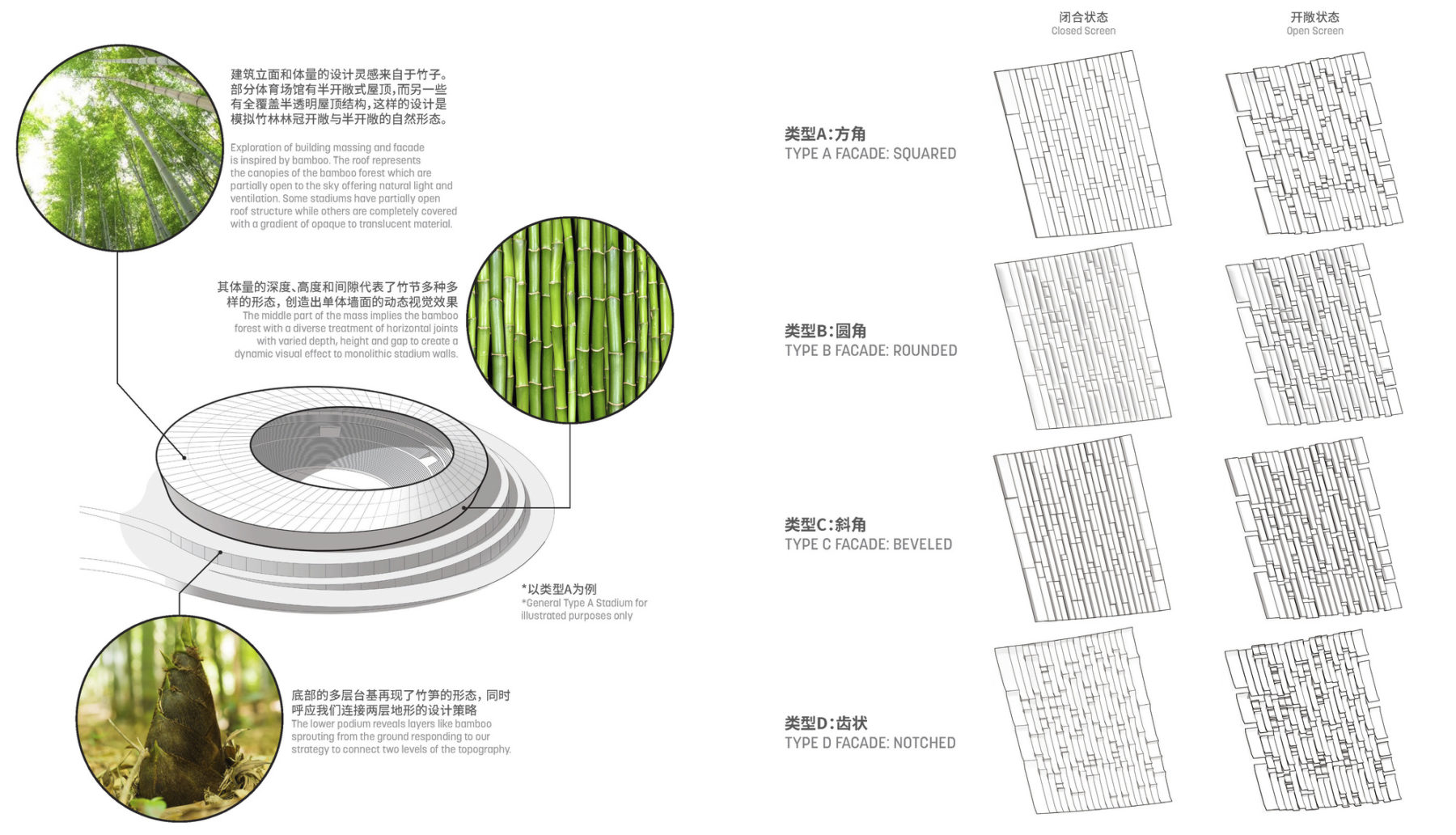
Stadium Façade Design Concept
The Urban Cultural Axis originates at the Central Business District and terminates at the Sancha Art Village with its intimate waterfront experiences.
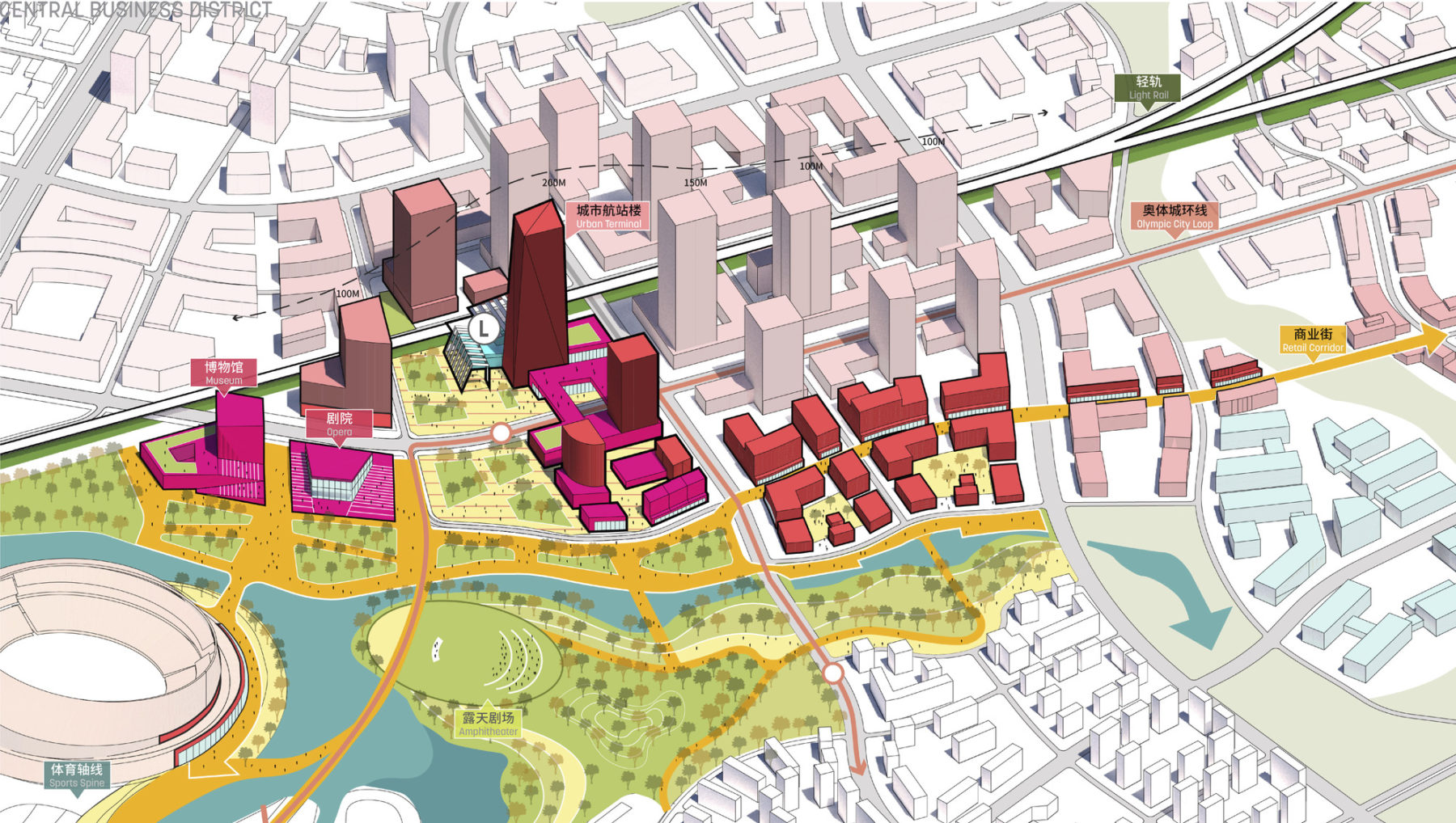
Central Business District
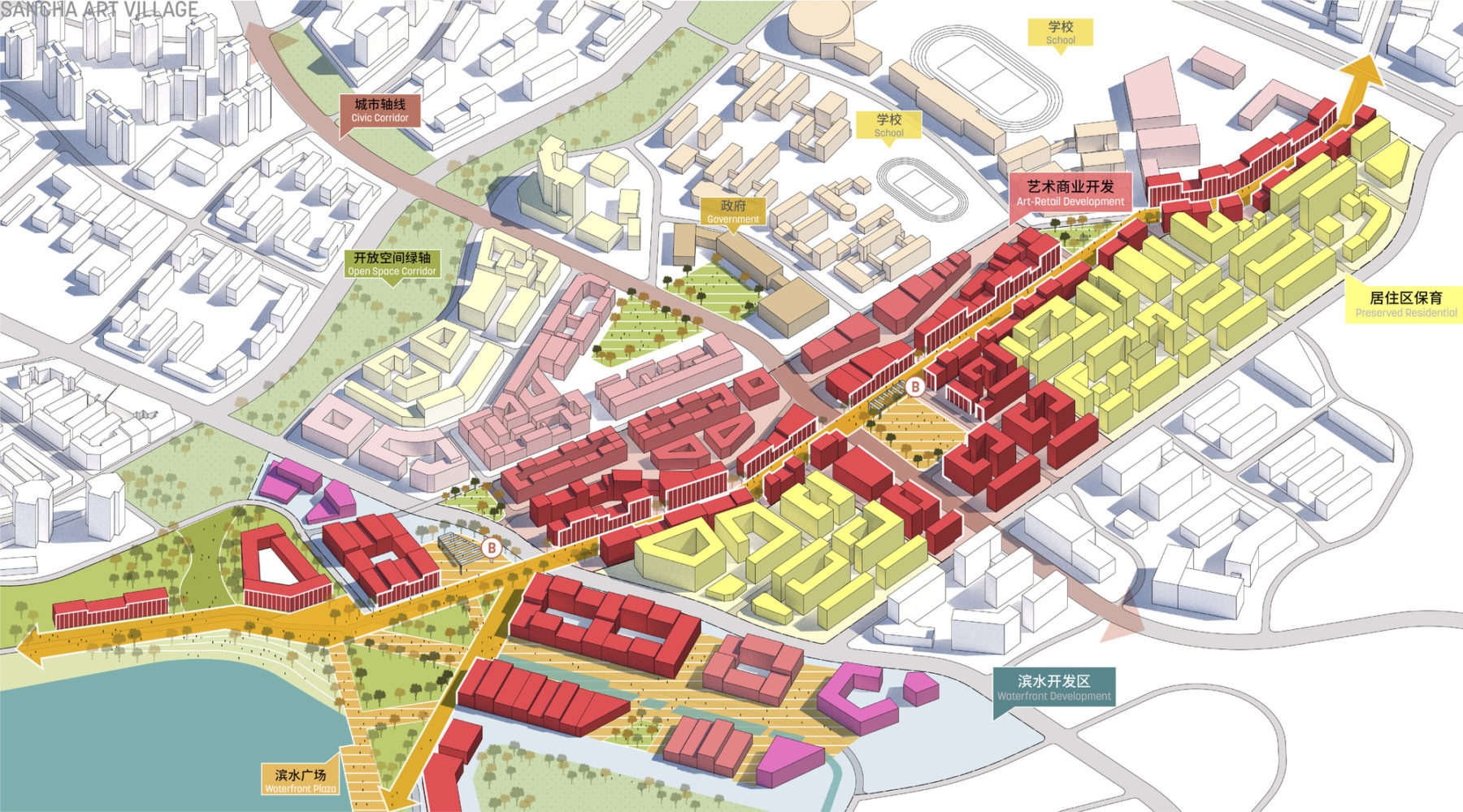
Sancha Art Village
Tianfu Olympic Sports City’s diverse sports, cultural, leisure, and business opportunities strategically complement Chengdu’s new Aerotropolis and the Longquan Mountain Urban Forest Park. When completed, the district will be an international landmark for sports and culture, and a new gateway connecting Chengdu to the world.